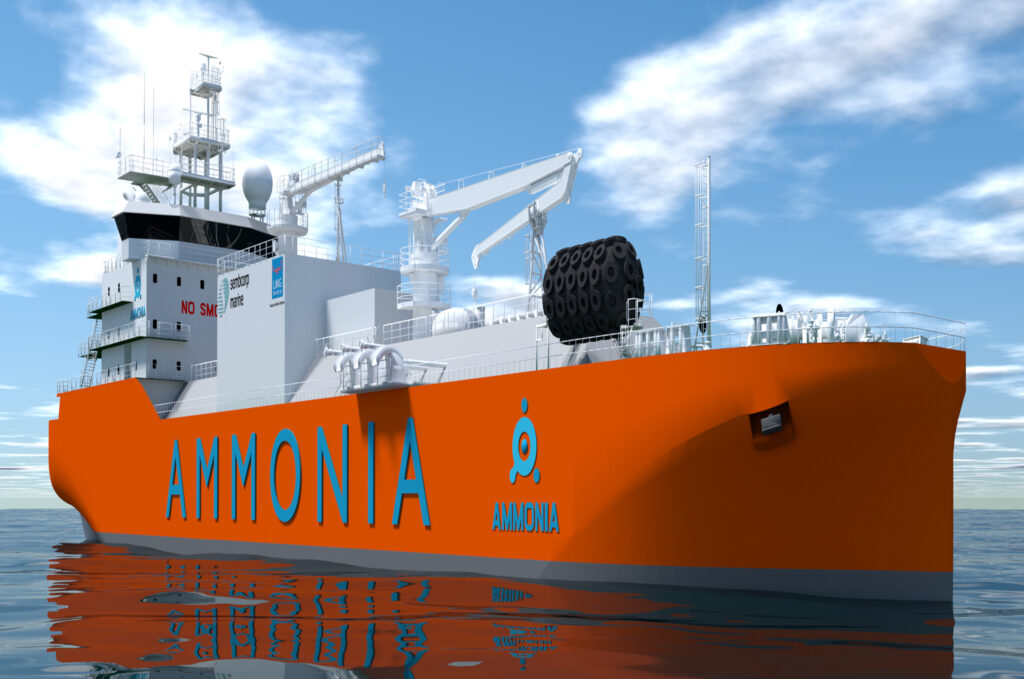Sembcorp Marine granted AiP for ammonia bunkering vessel
By Julian Atchison on January 20, 2022
A consortium led by Sembcorp Marine has been granted AiP by the American Bureau of Shipping for a new ammonia bunkering vessel design. Sembcorp and its subsidiary LMG Marin (who was recently engaged by Grieg Maritime and Wartsila to design the MS Green Ammonia) were responsible for the design phase, which passed a rigorous HAZID assessment with support from the American Bureau of Shipping. Consortium partners also include Mitsui O.S.K. Lines and Itochu, two organisations with growing ammonia interests in Singapore.
Today LNG, tomorrow ammonia
The same consortium is currently building a 12,000 m³ LNG bunkering vessel, which – once completed – will be the largest such vessel in Singapore. Sembcorp is Singapore’s largest LNG supplier: a crucial role when you consider that some 95% of Singapore’s electricity generation comes from natural gas. But the move from brown to green is of significant concern to Sembcorp, with the organisation announcing last year it would shift its focus to renewables and hydrogen (and now ammonia). The shift has been quick: last year Sembcorp entered into an agreement with Chiyoda and Mitsubishi to establish clean hydrogen supply chains in Singapore, and they are also involved in Whitetail Energy’s Allam-cycle power plant in the UK.
AiPs for ammonia bunkering
The new announcement is one of a number of ammonia & ammonia-ready bunkering designs in progress:
- In March 2021 Korean Register granted AiP for an 8K ammonia bunkering vessel (dual-fuel with marine heavy oil).
- In June 2021 Oceania and Kanfer agreed to develop the world’s first ammonia-ready bunkering vessel. It will initially run on & transport LNG, but be able to be modified to be powered by & carry ammonia as a bunker fuel.
- In September 2021 Azane Fuel Solutions received funding from the Norweigan government to build the world’s first floating ammonia bunker terminal.
- And just last month, The Korean Green Ammonia Shipping/Bunkering Consortium won approval for two designs, including a 38,000 m3-class ammonia transport/bunkering vessel.
